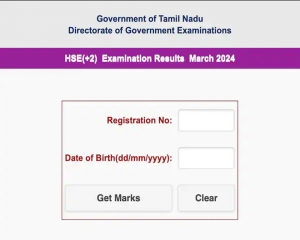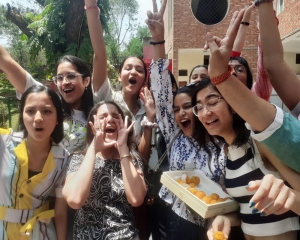An obsessive emphasis on looking for shortcuts is at the root of thejugaad culture. But in today’s world, we need a high level of education and capable institutions to promote new ideas
One of the initiative proposed by Union Minister for Finance Arun Jaitley in his Budget speech for the fiscal year 2015-2016 was the establishment of the Atal Innovation Mission, the purpose of which would be to provide an innovation promotion platform, involving academics, entrepreneurs and researchers and draw upon national and international experiences to foster a culture of innovation, research and development and scientific research in India. A sum of Rs150 crore was proposed by Mr Jaitley for this purpose.
This is certainly a good beginning, and ostensibly recognises the value of innovation to ensure that higher growth of the Indian economy is driven by scientific and technological developments, establishing a competitive edge in the international market and reaching higher efficiency in the use of various resources.
The subject of innovation introduced by Mr Jaitley through this measure appears like the tip of the iceberg. It is essential that the Government of India use the current opportunity to bring about a radical transformation of India’s R&D institutions and infrastructure such that it lends support and substance to national objectives, which includes Make in India, Swachch Bharat Abhiyan, ambitious expansion of renewable energy capacity, indigenisation of defence equipment, improved and enhanced access to health care, as well as generation of skills and spread of literacy and education.
If we look at India’s record of innovation, as represented by patents awarded to individuals and organisations in this country, we have substantial catching up to do. A quick review of patents awarded altogether including 2014, shows that the US earned 3,36,039 patents in 2014 and a cumulative total of 5.41 million till 2014; Japan 56,006 and 1.015 million; Germany 17,595 and 3,47,875; China 7,921 and 36,440; and India 3,044 and 14,450 respectively.
Actually, innovation in any society goes far beyond the grant of patents. Several innovations at the grassroots level have major impacts on the society, but often remain outside the formal system. Indians as a class have no lack of talent or originality in fostering innovation.
An obsessive emphasis on looking for shortcuts is at the root of the jugaad culture, which can to an extent only ensure innovation and innovative solutions in every field of endeavour across India.
But in today’s world, for a nation which has attained excellence in a few organisations and mediocrity in most, we need a high level of education and capable institutions to promote innovation.
The first challenge lies in restructuring and re-orienting our Government R&D set up. Organisations such as the Human Resource Development Group, Indian Council of Medical Research and Indian Council of Agricultural Research need to be de-bureaucratised, and made far nimbler in their operations and decision-making.
Particularly in the case of the Council of Scientific and Industrial Research, a good model to learn from would be the Australian Commonwealth Scientific and Industrial Research Organisation. This was traditionally very similar, in terms of dependence on Government funding, to the CSIR in India. But through a programme of purposeful reform, the CSIRO now gets a large share of its revenue from non-Government sources, making that entity much more result-oriented, and thus, creating a culture of innovation rather than continuing with open-ended research, the place for which lies in universities and colleges.
If we look at the performance of the CSIRO, we find that in 2013-2014, the total revenue was $1,244.9 million, including appropriation from Government at a level of $778.2 million and in addition, a sum of $466.7 million generated from other sources.
This large level of external funding has been reached through a progressive effort induced by Government policy and targets year-after-year. Significantly, the value and quality of work done by CSIRO in this period of progressive opening to the market has improved considerably.
In the ultimate analysis, a spirit of innovation needs to be engendered at the university and college level. Even those Indian universities, which earlier had a rich culture of research, have now declined to a level, where in the absence of a need to ‘publish or perish’ — which, of course, can be carried a bit too far — we find research activities at a very unsatisfactory level.
Consequently, faculty promotions only reward seniority and mediocrity. These include even the towering institutions of yesteryear, such as the Allahabad University, and new entrants like the Indian Institutes of Technology.
The only remedy for this pathetic situation is to make upward movement for faculty purely merit based, and to establish an organisation like the US National Science Foundation, with adequate funding, so that through a peer review system of research funding, we can transform university-level education to a research-driven enterprise.
This requires vision on the part of the Government and investment of large funds with a robust, professionally oriented institutional arrangement to administer such a system.
In the US, the President has requested the Congress $7.72 billion for funding the NSF for 2016, which represents an increase of $380 million over 2015 levels. In 2014, NSF received 48,000 proposals on the basis of which only 11,000 received support through its merit review process.
In 2012, the US spent, a total of 2.79 per cent of its gross domestic product on R&D, the UK 1.72 per cent, Sweden a whopping 3.41 per cent, Norway 1.65 per cent, Netherlands 2.16 per cent, Japan 3.39 per cent (in 2011), the Republic of Korea 4.04 per cent (in 2011), Israel 3.93 per cent, China 1.98 per cent and India only 0.81 per cent (in 2011).
If we are serious about fostering a culture of widespread innovation we need to put our money where our mouth is. If we do not, then innovations will take place elsewhere in the world, and will just pass us by, as a technologically sterile nation.
None of the country’s forward-looking programmes being articulated today would attain success unless these rest on a foundation of innovation at every level of the country’s economy. Business as usual in this arena is clearly not an option.
(The writer is director general, The Energy and Resources Institute and former chairman, Intergovernmental Panel on Climate Change)

























